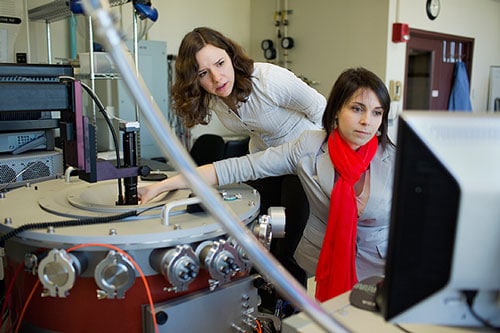Researchers at the Massachusetts Institute of Technology’s Microsystems Technology Laboratory have developed a new method for manufacturing filters for hardware-based cognitive radio applications that could improve performance and enable 14 times as many filters as currently possible to be placed on a single chip.
While different proposals for cognitive radio place varying emphasis on the importance of hardware and software, filters are considered to be the “chief component” of many hardware approaches.
Two primary approaches are used to filter radio signals in hardware-based cognitive radio—acoustic filtration, in which the radio signal is converted to an acoustic signal and then back into an electrical signal, and electric filtration

Researchers Dana Weinstein, from the Steve and Renee Finn Career Development Assistant Professor of Electrical Engineering and Computer Science, and Laura Popa, a graduate student in physics at MIT, adopted the first approach for their research, citing the fact that acoustic resonators are more precise and can be packed more densely than electric resonators.
However, Weinstein explains, the number of acoustic resonators in a filtration bank has a limit.
“The capacitors change the impedance that the antenna sees, so you may have unwanted reflections back into the antenna,” Weinstein told MIT News. “Each capacitor from each filter is going to affect the antenna, and that’s no good. It means I can only have so many filters, and therefore so many frequencies that I can separate my signal into.”
In addition, turning the acoustic resonators on or off—a necessary step for the isolation of a particular frequency—requires each resonator to have its own electrical switch. Incoming radio frequency signals must pass through the switch before reaching the resonator, and consequentially suffer some loss of quality in the process, Weinstein explains.
Researchers determined that their new resonator, based on the concept of a gallium nitride transistor—a technology common in many wireless devices—had only one-fourteenth the “capacitive load” of conventional resonators.
As part of the experiment, researchers altered the lower “plate” of the capacitor into a gallium nitride channel in its conductive state and switched the channel to its nonconductive state, effectively simulating the removal of the capacitor’s lower plate and reducing the capacitor’s effect on the quality of the radio signal.
With this technique, “the radio can now afford to have 14 times as many filters attached to the antenna, so we can span more frequencies,” Weinstein said.
A number of reasons have prevented widespread commercial adoption of cognitive radio, including cost concerns, size constraints and the availability of “frequency-agile components,” Thomas Kazior, a principal engineering fellow at Raytheon, told MIT News.
However, Weinstein and Popa’s work could help with both problems. “We’re talking about making filters that are directly integrated onto, say, a receiver chip, because the little resonator devices are literally the size of a transistor.” Kazior said. “They can [also] help with the cost problem because these resonator-type structures almost come for free.”






